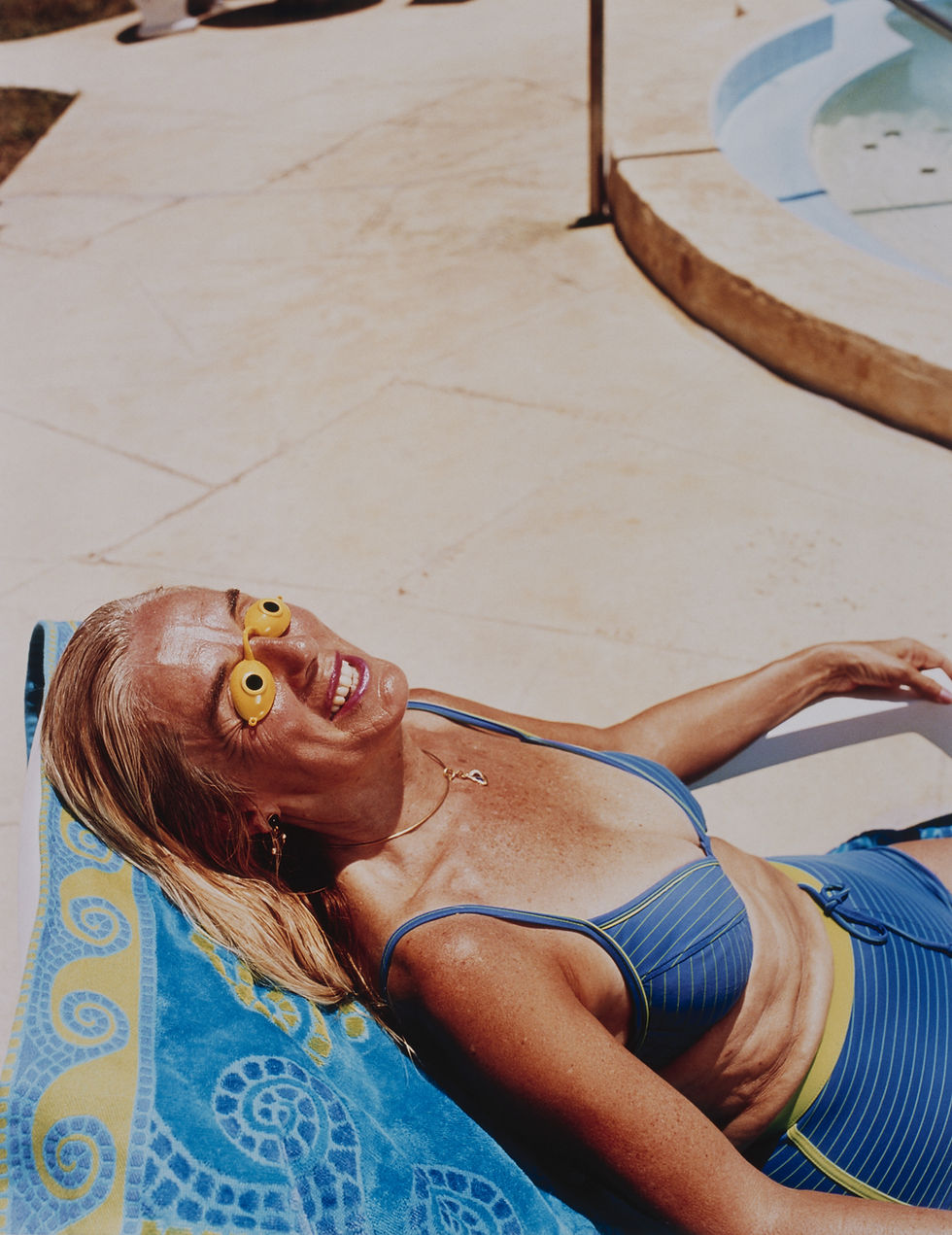PHOTOAGING
- Agnes Hindø

- 4. apr. 2021
- 3 min læsning
What is photoaging?

Photoaging is the premature skin aging caused by over exposure to the sun’s rays.
When skin ages prematurely it develops signs of aging faster than we would expect.
Research shows that up to 90% (!!!) of all symptoms of premature skin aging are caused by UV exposure. Yes, the sun!
And what is the difference between "normal" skin aging and premature skin aging?
Well, as skin ages, it changes the collagen and elastin that are responsible for the plumpness of youthful skin and with this, the skin starts to lose volume and sag resulting in the development of fine lines and wrinkles.
Did you notice your skin is getting dryer and dryer with age? I did!! That's because the skin is less able to attract and retain the moisture it needs.
With age, the skin can develop uneven pigmentation such as dark spots known hyperpigmentation, a form of which is solar lentigines (more commonly known as age spots or sun spots).
The make it simple, there are two types of skin aging − intrinsic and extrinsic: Intrinsic aging
As we age, so does our skin. Intrinsic aging is entirely natural and there’s nothing we can do about it. It is known as intrinsic or chronological aging. Intrinsic aging comes from internal factors such as our genetics and the hormonal changes that happen at the different stages of life. Extrinsic aging
Extrinsic aging, on the other hand, is highly controllable. Extrinsic aging comes from external factors such as the environment, like weather conditions and sun exposure, our lifestyle choices such as smoking and drinking alcohol, and medication. These factors can cause skin to age prematurely.
How to avoid photoaging during summer?
Now we know that photoaging is caused by excessive sun exposure of the skin. Therefore, this is not the natural aging caused by age, but an effect due to the lack of care for the skin.
Photoaging is one that is caused by external factors, leaves the skin dry, rough and can even develop into melanoma or carcinoma.
When the UV radiation penetrates the skin, damages collagen fibers. Because of this, the production of elastin is compromised and results in the production of metalloproteinase enzymes which are the enzymes that regenerate the damaged collagen, but because of all the action of the sun and UV rays they are incorrectly regenerated and further degrade the collagen. In other words: this results in a skin regenerated with "defects".
But, is it possible to prevent cutaneous photoaging?
Over time and the lack of care for the skin and great exposure to the sun causes wrinkles, spots and pigmented lesions to appear. The problem is that the damage caused to the skin by exposure to the sun is cumulative. Thus, the excesses of childhood, adolescence and even adulthood will be accumulated and perceived only many years later.
A healthier skin is better able to resist sun damage. Give your skin the gift of resistance by keeping it well nourished and properly moisturized. In addition, the daily use of antioxidants and stimulants of collagen synthesis are great allies in combating photoaging.
Water intake is another essential factor to maintain skin balance, as it contributes to the elimination of toxins and promotes circulation.
Think About Your Sun Care Strategy
If you don’t have one yet, it is never too late to draw up a plan. The sun, after all, is the single biggest culprit that causes photoaging.
Wear broad spectrum spf 30 or even better, spf50+ all day, E.V.E.R.Y day, even in winter and don't forget to never sit outside with your face exposed to the sun when you are at the beach, parks, g for a walk or is enjoying a cup of coffee.
Go beyond your sunscreen to include a hat, big sunglasses and if possible, spf clothing.



Kommentarer